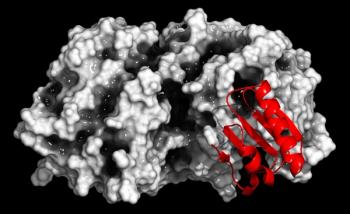
FDA Approves Daratumumab and Hyaluronidase-Fihj With VCd for AL Amyloidosis
Key Takeaways
- AL amyloidosis is a rare disorder with harmful protein deposits affecting organs, primarily the heart and kidneys, and can mimic less severe conditions.
- Daratumumab and hyaluronidase, combined with VCd, improve survival outcomes in AL amyloidosis by blocking cancer cell growth and enhancing medication absorption.
FDA approves daratumumab and hyaluronidase for treating newly diagnosed light chain (AL) amyloidosis, enhancing survival rates and treatment efficacy.
The FDA has approved daratumumab and hyaluronidase-fihj (Darzalex Faspro, Janssen Biotech Inc.) in combination with bortezomib, cyclophosphamide, and dexamethasone (VCd) for the treatment of newly diagnosed light chain (AL) amyloidosis. This combination drug received FDA accelerated approval in 2021 for the same indications.1,2
What is AL Amyloidosis?
AL amyloidosis is a rare disorder, estimated to affect 9 to 14 in 1 million US adults, in which mutated plasma cells in the bone marrow produce abnormal light-chain proteins that form harmful protein deposits in organs and tissues. These deposits most often impact the heart and kidneys but can also involve the gastrointestinal tract, nerves, and skin. Treatment for this disorder could include chemotherapy, stem cells, or bone marrow transplantation. When found early, AL amyloidosis can be managed as a chronic condition, but without treatment, it can progress to life-threatening complications.3
AL amyloidosis can affect many areas of the body, and its symptoms often mimic those of more common, less severe conditions. The symptoms develop gradually, causing individuals not to notice changes immediately. Signs and symptoms include lightheadedness when standing, purple discoloration around the eyes, and an enlarged tongue, along with numbness, tingling, or burning in the arms and hands from peripheral neuropathy or carpal tunnel syndrome. It may also lead to swollen or weak legs, easy bruising or bleeding, and purple-colored skin folds.3
How Do Daratumumab and Hyaluronidase Treat AL Amyloidosis?
Daratumumab and hyaluronidase is a combination medication that contains monoclonal antibodies and is used as an injection alone or in combination with other medications or therapies to treat multiple myeloma and now AL amyloidosis. Daratumumab blocks a protein that helps cancer cells grow, slowing or stopping their spread, while hyaluronidase improves the absorption of medications so they can work more effectively.4,5
The injection is indicated to be used in combination with VCd, which is a cancer drug combination. Bortezomib is a proteasome inhibitor that blocks protein breakdown in cells, causing cancer cells to die; cyclophosphamide is a chemotherapy drug that destroys rapidly dividing cells; and dexamethasone is a steroid that helps kill myeloma cells.6
Clinical Trial Data Evaluating Daratumumab and Hyaluronidase With VCd
The efficacy of daratumumab and hyaluronidase in combination with VCd was evaluated in the open-label, randomized, active-controlled ANDROMEDA trial (NCT03201965). A total of 388 patients with newly diagnosed AL amyloidosis with measurable disease and at least 1 affected organ were included. Patients were randomly assigned to receive VCd or daratumumab and hyaluronidase with VCd (D-VCd).1,7
The approval was supported based on data showing that adding daratumumab to VCd significantly improved major organ deterioration-progression-free (MOD-PFS) survival and overall survival compared with VCd alone. The results demonstrated that after a median follow-up of 61.4 months, the D-VCd group had a 53% reduction in the risk of MOD-PFS events and a 38% reduction in the risk of death, with median MOD-PFS and overall survival not yet reached in the daratumumab arm.1
The most common adverse reactions in patients with AL amyloidosis treated with D-VCd include upper respiratory infections, gastrointestinal issues like diarrhea and constipation, peripheral edema, peripheral sensory neuropathy, fatigue, nausea, insomnia, shortness of breath, and cough.2
The researchers noted that the recommended dose is 1800 mg of daratumumab plus 30,000 units of hyaluronidase, given as a subcutaneous injection in the abdomen over 3 to 5 minutes, following the scheduled dosing and used in combination with VCd.1,2
REFERENCES
1. FDA grants traditional approval to daratumumab and hyaluronidase-fihj for newly diagnosed light chain amyloidosis. News release. FDA. November 19, 2025. November 19, 2025. https://www.fda.gov/drugs/resources-information-approved-drugs/fda-grants-traditional-approval-daratumumab-and-hyaluronidase-fihj-newly-diagnosed-light-chain
2. FDA grants accelerated approval to Darzalex Faspro for newly diagnosed light chain amyloidosis. News release. FDA. January 15, 2021. Accessed November 19, 2025. https://www.fda.gov/drugs/resources-information-approved-drugs/fda-grants-accelerated-approval-darzalex-faspro-newly-diagnosed-light-chain-amyloidosis
3. AL Amyloidosis (Primary Amyloidosis). Cleveland Clinic. News release. June 24, 2022. Accessed November 19, 2025. https://my.clevelandclinic.org/health/diseases/15718-amyloidosis-al-amyloid-light-chain
4. Daratumumab and Hyaluronidase-fihj Injection. News release. MedlinePlus. Updated September 20, 2024. Accessed November 19, 2025. https://medlineplus.gov/druginfo/meds/a620040.html
5. Daratumumab; Hyaluronidase Injection. News release. Cleveland Clinic. Accessed November 19, 2025. https://my.clevelandclinic.org/health/drugs/23655-daratumumab-hyaluronidase-injection
6. Bortezomib, cyclophosphamide, and dexamethasone (VCD). News release. Cancer Research UK. Updated October 14, 2024. Accessed November 19, 2025. https://www.cancerresearchuk.org/about-cancer/treatment/drugs/vcd
7. A Study to Evaluate the Efficacy and Safety of Daratumumab in Combination With Cyclophosphamide, Bortezomib and Dexamethasone (CyBorD) Compared to CyBorD Alone in Newly Diagnosed Systemic Amyloid Light-chain (AL) Amyloidosis. Janssen Research & Development. Updated May 25, 2025. Accessed November 19, 2025. https://clinicaltrials.gov/study/NCT03201965
Newsletter
Stay informed on drug updates, treatment guidelines, and pharmacy practice trends—subscribe to Pharmacy Times for weekly clinical insights.















































































































































































































